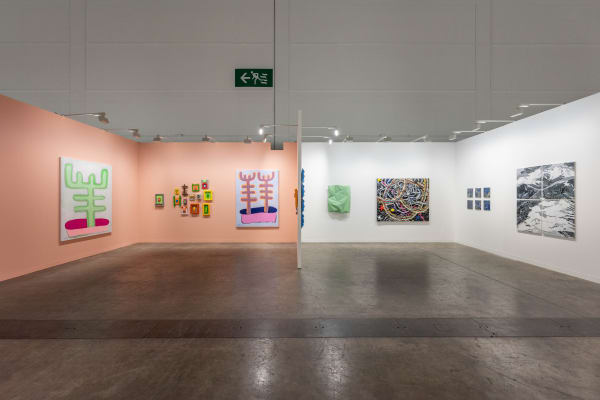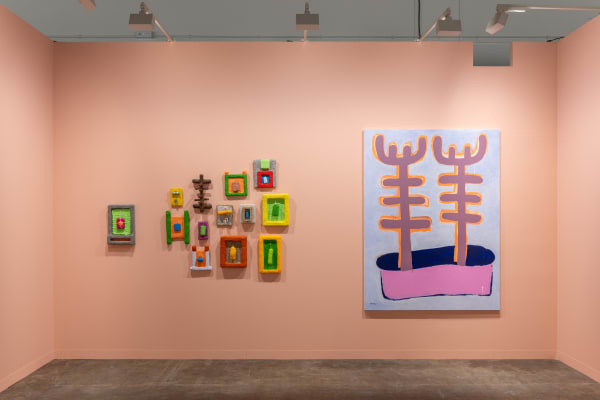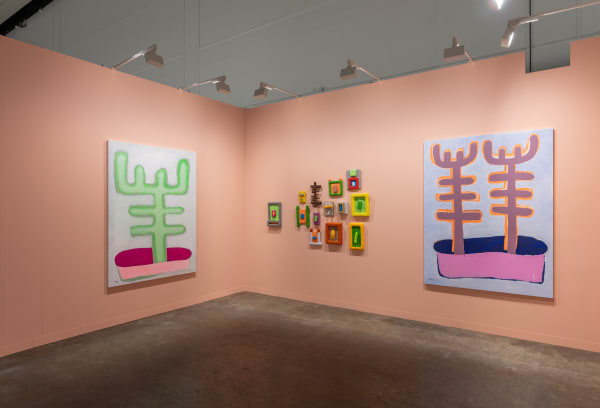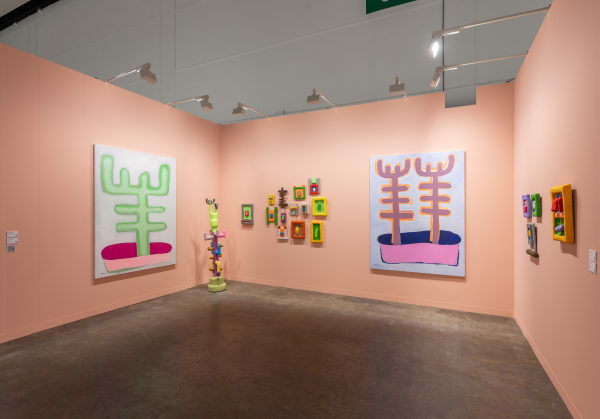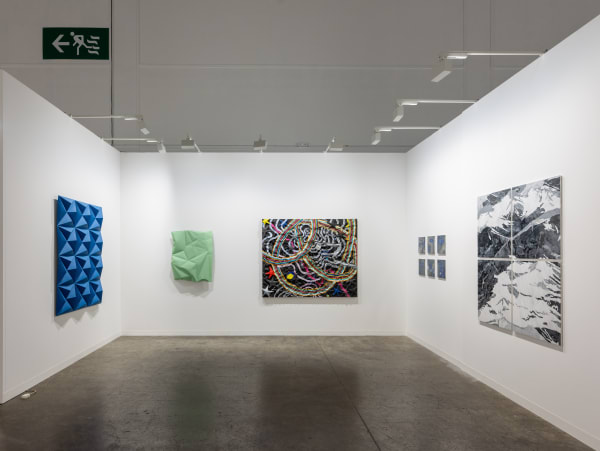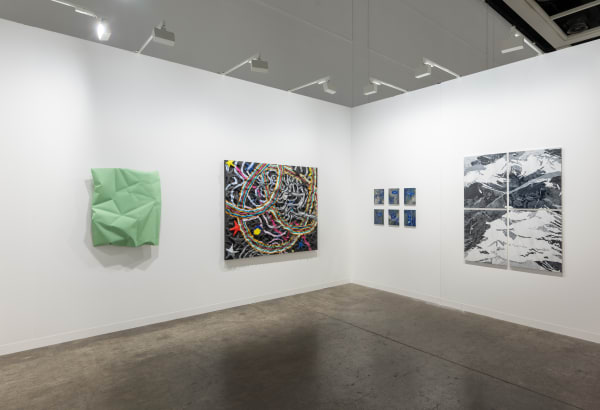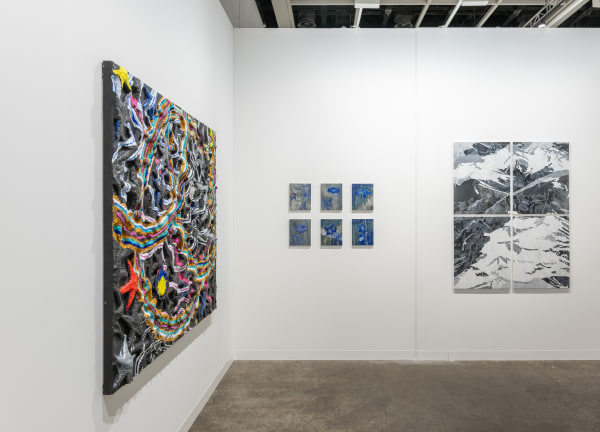 Booth 3C16
Hong Kong Convention & Exhibition Centre
Booth 3C16
Hong Kong Convention & Exhibition Centre
Lawrie Shabibi is pleased to return to the 2025 edition of Art Basel Hong Kong with two distinct presentations in the Kabinett and Galleries sector. Kabinett showcases a solo presentation of Emirati artist, Mohamed Ahmed Ibrahim (b. 1962, UAE) alongside a group presentation in Galleries highlighting works by Hamra Abbas (b. 1976, Pakistani, born in Kuwait), Shaikha Al Mazrou (b. 1988, UAE), and Nabil Nahas (b. 1949, Lebanon).
Mohamed Ahmed Ibrahim (b. 1962, UAE) is part of the UAE's first generation of contemporary artists from the late 1980s, an avant-garde scene that included Hassan Sharif, Abdullah Al Saadi, Hussein Sharif, and Mohammed Kazem. His prolific practice, deeply rooted in his experiences in Khorfakkan, his place of birth, explores memory, imagery, and environmental perception. Ibrahim's work is characterized by repeated forms and lines, predominantly in black and white, and more recently in color, using rudimentary materials like cardboard, string, and papier-mâché.
For Art Basel Hong Kong’s Kabinett sector, Ibrahim presents a series of paintings and sculptures inspired by his surroundings, featuring endlessly repeated, reconfigured, and recoloured plant motifs, alongside spontaneously created papier-mâché sculptures that blend playfulness with deep contemplation.
Our curatorial focus unites artists from diverse cultural backgrounds and various artistic disciplines, including sculptors, installation artists, and mixed-media practitioners. Presented in the Galleries sector are artists Hamra Abbas, Shaikha Al Mazrou and Nabil Nahas offering a unique lens through which to examine the interplay of materiality and abstraction.
Hamra Abbas and Shaikha Al Mazrou both explore materiality through distinctive artistic approaches. Abbas creates intricate wall sculptures inspired by her travels, focusing on the historical significance of materials like Lapis lazuli from Badakhshan, Afghanistan, and delving into their cultural and artistic implications. Al Mazrou’s sculptures are partially inspired by the properties and possibilities of folded and creased paper, transmuted into stainless steel. Inflated and folded, they resemble giant displays of origami. Her sculptures emerge from small-scale paper prototypes, expressing materiality through an intuitive understanding of physical properties and drawing inspiration from contemporary art movements centered on formal and material elements.
Nabil Nahas complements these artists with his own unique exploration of form and perception, drawing inspiration from nature and Islamic art. His multi-layered paintings evoke biomorphic and organic forms, playing with celestial and marine phenomena through careful manipulation of color, texture, and scale. Rooted in abstract geometry and three-dimensional explorations, Nahas invites viewers to immerse themselves in microcosmic worlds within his canvases, blending geometric precision with organic sensibilities. His work demonstrates a profound engagement with the visual language of abstraction, transforming natural and artistic influences into compelling visual experiences.
